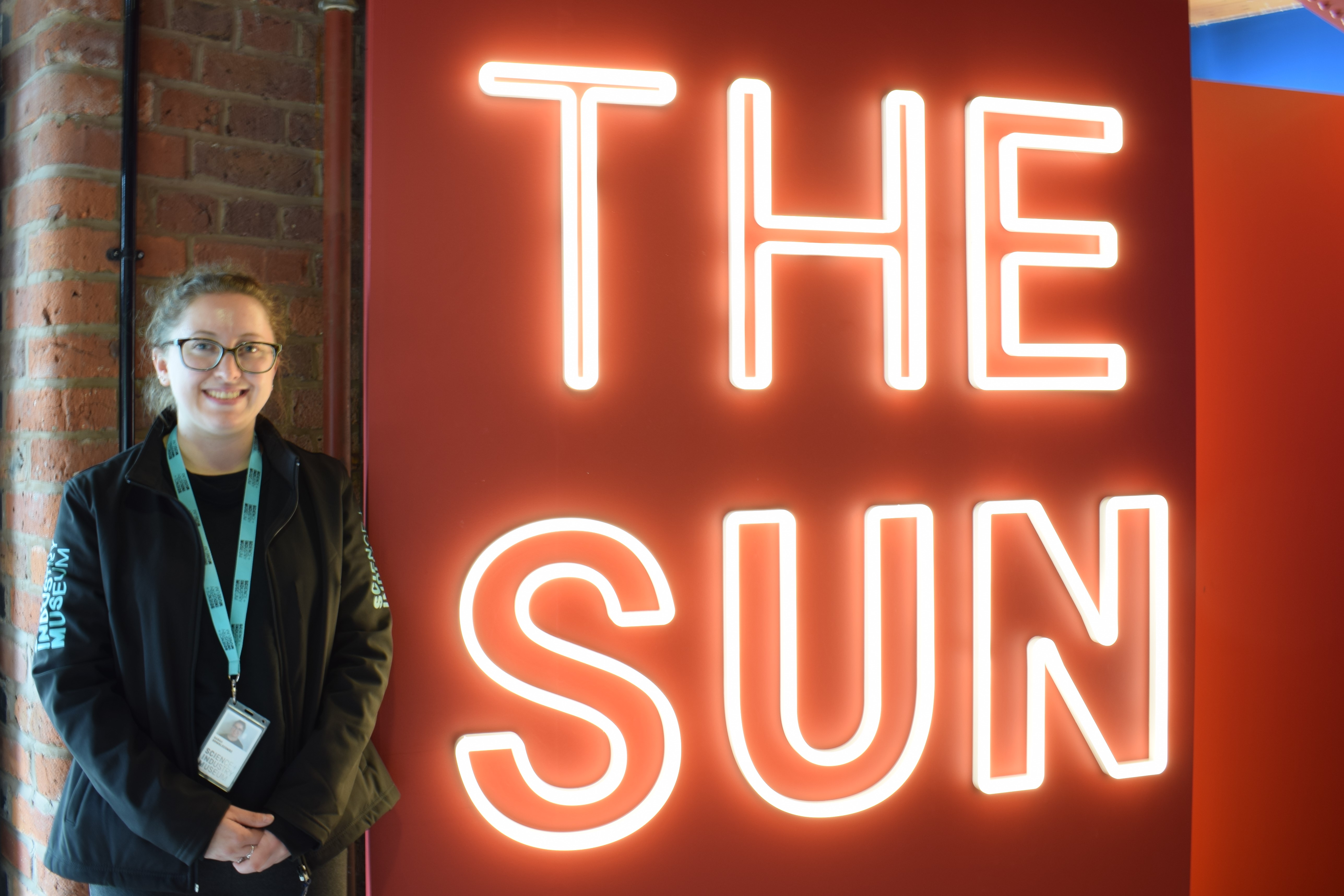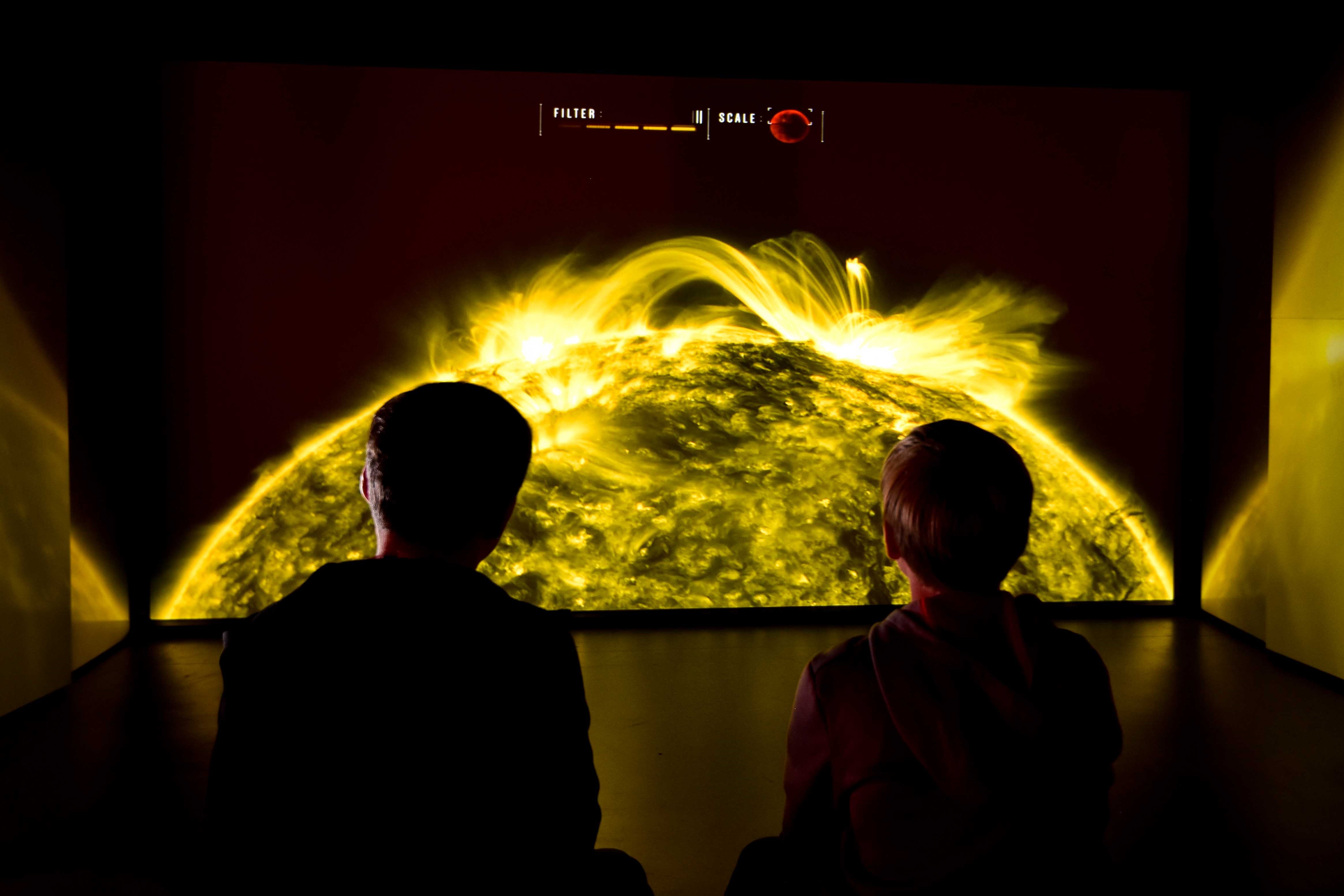Please note: The Sun exhibition ended on 4 November 2020. To find out what exhibitions and activities are open today, visit our What’s On section.

Science Museum Group © The Board of Trustees of the Science Museum
It’s fair to say I was really excited to join the volunteer team for The Sun (as well as start my first volunteer role at the Science and Industry Museum), as I have a passion for all things science in general, but our solar system in particular. The Sun has been burning bright for 5 billion years and has enough energy to keep burning for 5 billion more. It provides our planet with glorious heat, utilisation and enjoyment, making it a fascinating exhibition subject.
Whatever expectations I had set for The Sun exhibition, they’ve been well and truly exceeded as I’ve been blown away by the detail and thought that’s been put into it. Every visit leaves me with a new piece of information, either from the exhibit items themselves, or from the visitors I get to spend time with.
The Sun exhibition shares a timeline of our beliefs and knowledge of the sun throughout history and the ways we’ve attempted to harness its awesome power. It shows the groundwork laid for future research to further understand its composition, presence and the continued effects it will have on our Earth, for many years to come. Put simply, the Sun is a big ball of wow.
As the people who pass through the exhibit change, it’s as if the items change too; conversations spark interest and stories from personal experience, which has left me seeing each part and the objects within them from new perspectives. It’s also clear from interacting with visitors that for each individual, at least one section leaves them in awe. Within Observing the Sun, a visitor became completely rapt by the concept of sunspots and their magnetic qualities. Within Days and Years, another was impressed by the intricacy and detailing of some of the earlier sundials, allowing us to muse over inventors out of their time.
Children have taken glee in telling me facts about the sun—did you know it was Copernicus who said that the Sun was at the centre of our universe, not Earth?—and have made fantastic observations about the objects. They see the tinfoil hat in the survival display not being entirely ridiculous as you could use it to reflect the Sun’s rays to make fire! I’ve also taken immense joy piquing their interest about visible light using a prism to make rainbows, as well as thinking about how to become mini survivalists for 5 minutes, determining how we’d stay safe in the event of a huge solar storm.

Science Museum Group © The Board of Trustees of the Science Museum
My favourite part of The Sun has to be the final section, Observing The Sun. It’s where the Sun’s overwhelming wonder really strikes you, looking at how our current knowledge and thirst to know more are put to use in satellites that journey to our nearest star. There are many questions still remaining, leaving individuals keen for more, but if nothing else inspired.
Since my first walk through the exhibition, I’ve had the privilege, week after week, to be part of a family day out, a child’s curriculum, and trips down memory lane. I hope to keep giving as much back to The Sun and its visitors as they continue to give and teach to me.